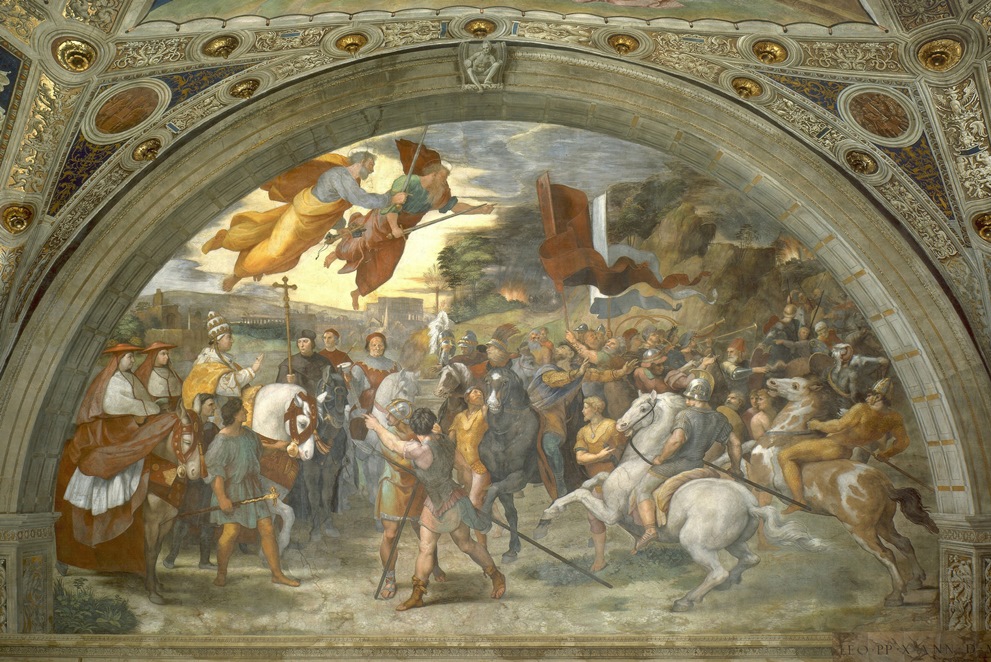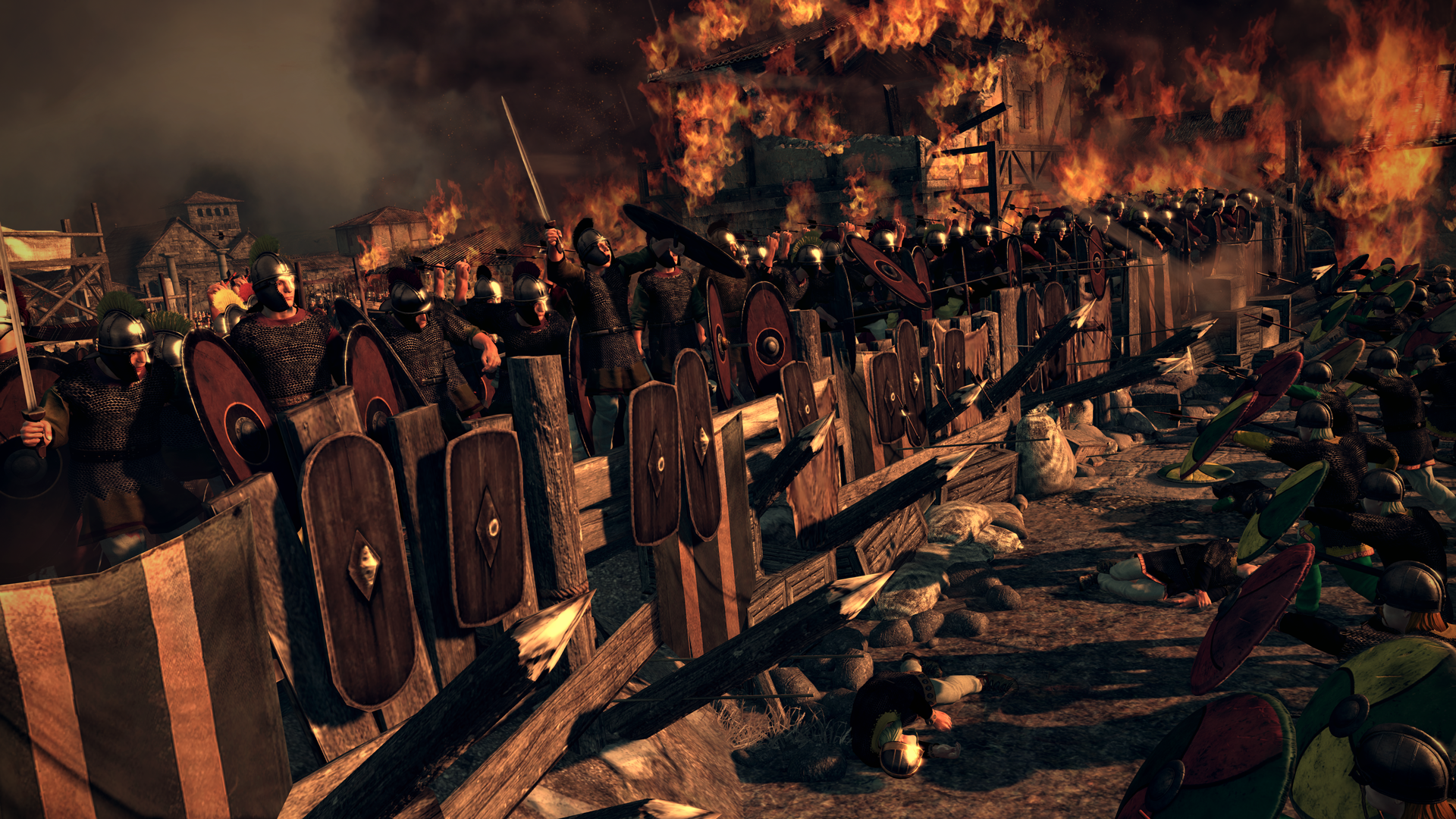Attila is the latest game in the Total War series with again a historical figure in its title. This strategic-tactical combination game can give you a nice feeling of how 5th century warfare looked and felt like. This review gives an opinion of the historical realism of the game.
Historical background of the game setting
The grand campaign starts at 395 AD and covers the area of Europe, North Africa, the middle East and western Asia. The Roman Empire has just been divided in a Western Roman Empire and a Eastern Roman Empire. In this period (the end of Roman hegemony and the beginning of the ‘dark’ ages) the Western Roman Empire is very weak and the Eastern Roman Empire has a lot of trouble to keep nomadic tribes which are crossing their borders in check. One of the most famous of these Nomadic tribes are the Huns with their best known leader Attila. Attila (‘The Scourge of God’) included many Germanic tribes to the Huns rule and attacked the Eastern and Western Roman empires in wars of extraction.1 This interesting era is the games setting.
1 E.A.Thompson, The Huns (Oxford, 1999).
Ferdinand Lot, De Germaansche invasies: de versmelting van de Barbaarsche en Romeinsche wereld (Den Haag, 1939).
J.Otto Maenschen-Helfen, The world of the Huns: studies in their history and culture (Berkeley, 1973).
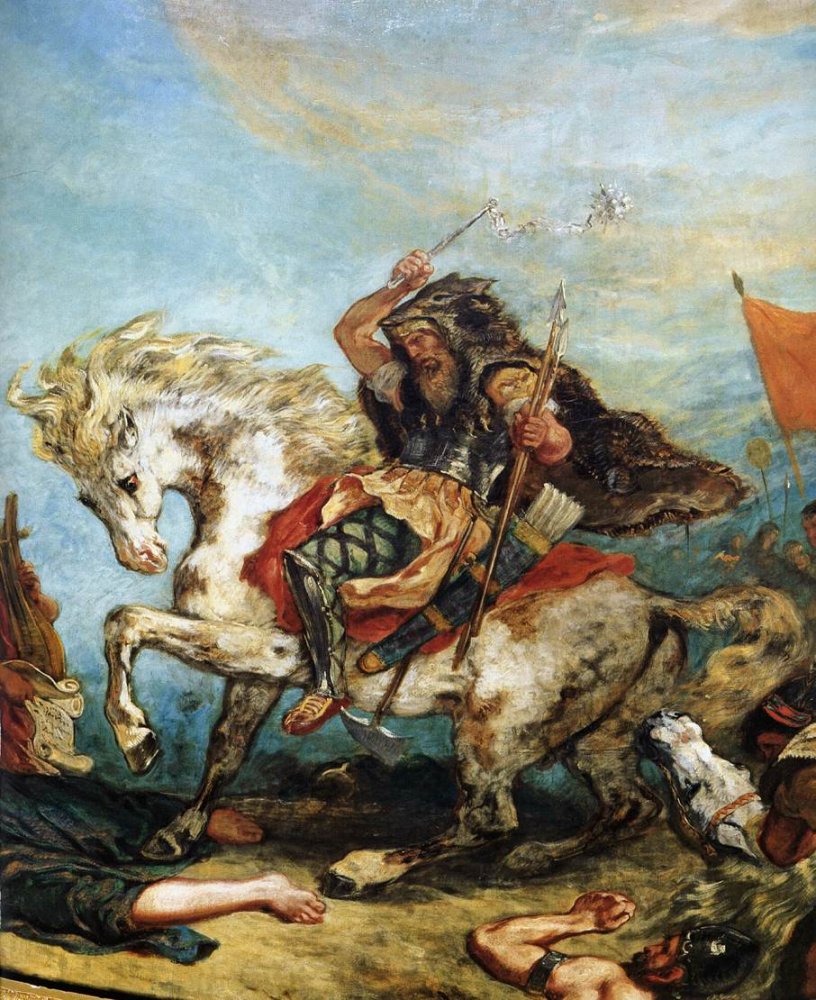
Storyline and website content
This game can be played in different modes, if you choose campaign-mode in single player or multiplayer, you will have to choose a faction to play with. Every faction has its own storyline which is the most specific at the beginning of your campaign when you will see an intro movie on that specific faction. Let it be clear that only if you play with the Hun faction you will play with Attila as a character in the game. If you choose an other faction you might ending up wondering where Attila is in the game because you won’t be confronted by him except by the message that he has been born after a couple of turns. But the intromovies of the factions are very nice. Historically correct for the most part, maybe a bit to cinematic but you will get a feeling of the faction you are playing with. The factions you can play with did all exist for real in the historical era concerned. A novelty in this Total War game are factions who are migrators or tribes which exists out of hordes. Playing with a horde is different than playing with a kingdom or empire. The hordes are carrying a camp which can be deployed almost everywhere on the map. Ones the camp is deployed you can expand the camp with new huts, yurds etc. If you want to march your army (horde) you undeploy your camp. In this way Creative Assembley (the developers) tried to resemble the great migrations of the 5th century in Europe in which they, in my opinion succeeded. It really plays different than playing with a kingdom.2
2 J.Otto Maenchen-Helfen, The world of the Huns: studies in their history and culture (Berkeley, 1973).
Rating: 
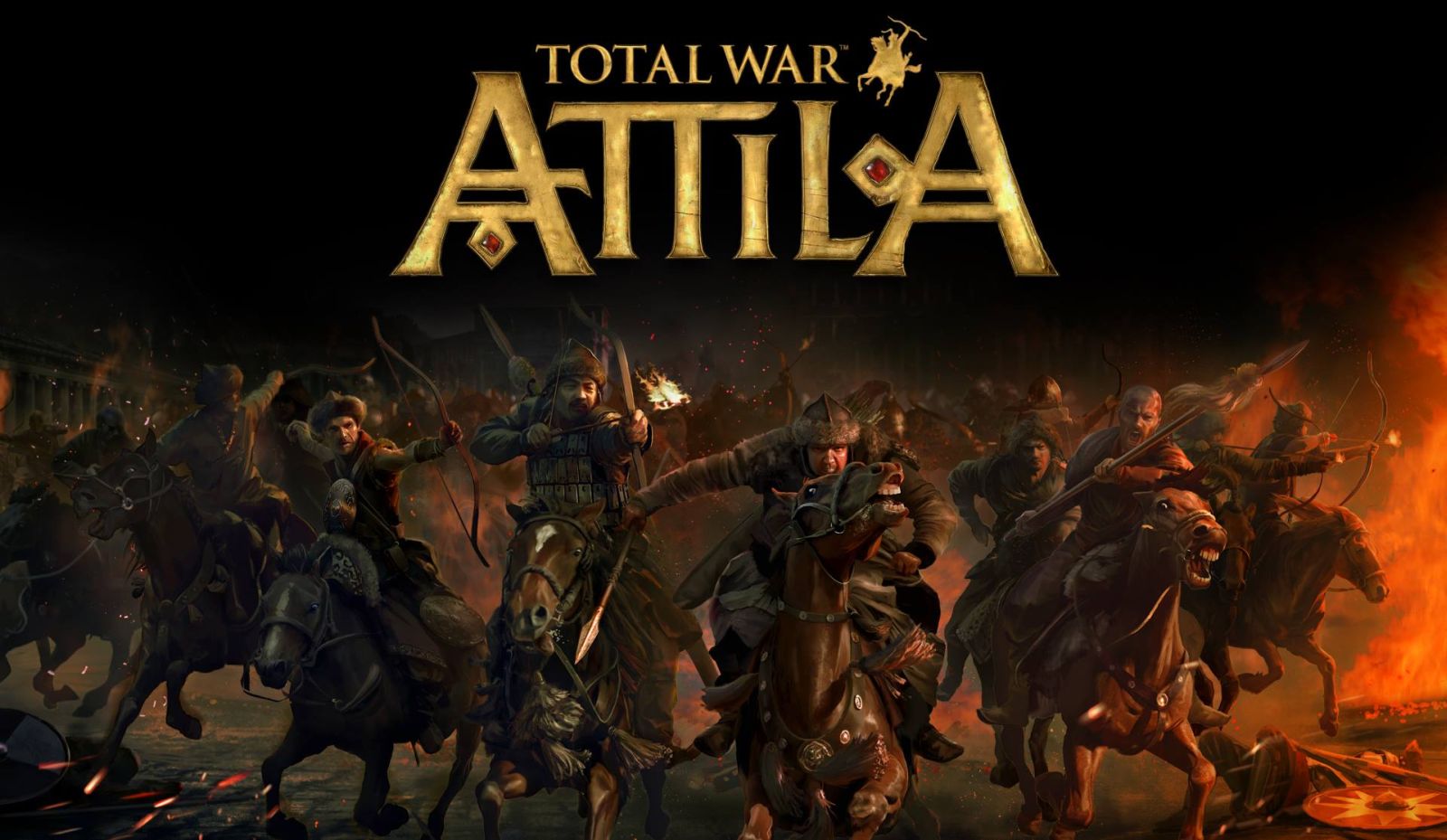
Graphical Design
The Graphical design is awesome. As we are used to with the Total War series all the different units have their own costume, weapons and armour with a lot of details (if your graphical settings can handle it :-)). Buildings, fortresses, siege weapons all look authentic. In a quick overview you can see there has been put a lot of effort in historical research. Funny detail here is that if you play with a nomadic tribe (like the Huns) off course your housing exists out of different tents instead of stone buildings as they actually did in the history of the Huns.3 What you see and play with feels historical and is for the most past historical correct (as far as this can be researched..)
3 Maenchen-Helfen, J.Otto, The world of the Huns: studies in their history and culture (Berkeley, 1973) 178-180.
Rating: 
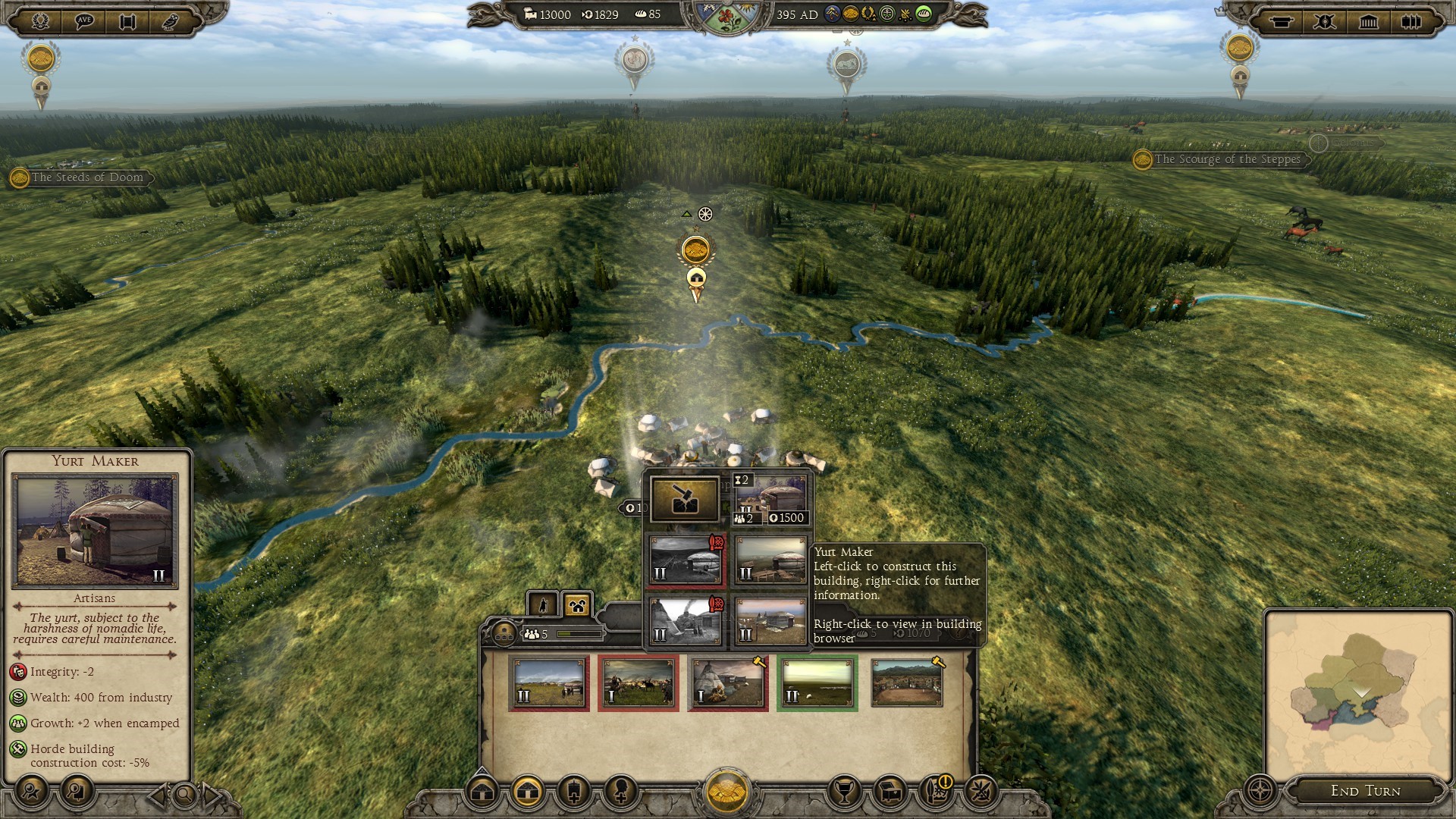
Parameters
This is also a good part. All the weapons you play with have accurate shooting distances, impact etc, etc. It makes a lot of difference of you wear armour or not and what kind of armour you wear, as it was in reality. Your men will get tired when they ran to long and when exhausted they will fight worse. Flanked units have a bigger change to lose the fight than when they are not flanked etc, etc the list is endlessly wich gives the feeling that you are really have to coop with the tactics of fifth century warfare.
Rating: 
Personages
Personages in the game can be played with in the form of generals or admirals for your armies and fleets or governors. Besides that your ruler has a family tree with people who you can assign to different offices. Every general and family member has different skills and different settings. Many of these characters are historically correct. When you play with the Hun faction, Attila will be born after a number of turns. When he is old enough he will be the leader of the Hun faction and a general. An annoying detail is that each character has an illustration of his face but it happens quite often that the same face is being used for different characters.
Rating: 

Sound and music
Sound and music is nice but it doesn’t sound that the music is authentic. Sounds of clashes of armies, horses and weapons do have some comparisation to reality.
Rating: 
Game-mechanism
Is the game-mechanism historical realistic? Well yes and no. Game factions had factions leaders and the decisions you make are the decisions a faction leader in historical reality could make. The information you have is surely more and better than in historical reality. For example, Attila might not always know where friendly armies of the Hun exactly were located. On the tactical level you can order issues on unit level. Off course on a battlefield of that time it was the local commander of the unit who would make the orders and not the faction commander. So as in most wargames that is not historical correct but it is so damn fun and playable….;-)
Rating: 
Overall historical realism: 
Used sources for this review
Lot, Ferdinand, De Germaansche invasies: de versmelting van de Barbaarsche en Romeinsche wereld (Den Haag, 1939).
Maenschen-Helfen, J.Otto, The world of the Huns: studies in their history and culture (Berkeley, 1973).
Thompson, E.A., The Huns (Oxford, 1999).
More information on the games topic to enhange your historical gaming experience!
Website:
https://en.wikipedia.org/wiki/Attila
Movies:
Attila the Hun (tv mini-series, 2001) (not historical very realistic but fun to watch).
Documentary:
Total War: ATTILA Documentary – The Scourge of God (made by Creative Assembley themselves with a lot of game footage).
-https://www.youtube.com/watch?v=c QA30DDt3o#t=49
